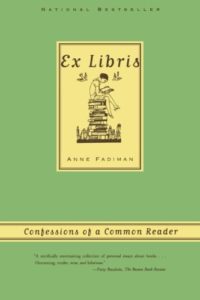 As a book reviewer, I often read books that are not of my own choosing. Even when I have a choice, and I am intrigued by a title, author, or description, I am often disappointed. So imagine my delight when I chose a book that I am thoroughly enjoying: Ex Libris: Confessions of a Common Reader by Anne Fadiman (Farrar Straus and Giroux, 1998). Admittedly, I was enticed by a blurb on the cover: “A terrifically entertaining collection of personal essays about books…Heartening, tender, wise, and hilarious” (Patsy Baudoin, The Boston Book Review). The recommendation rings true, and I find myself smiling as I enjoy the turn of a phrase or see myself in the pages.
As a book reviewer, I often read books that are not of my own choosing. Even when I have a choice, and I am intrigued by a title, author, or description, I am often disappointed. So imagine my delight when I chose a book that I am thoroughly enjoying: Ex Libris: Confessions of a Common Reader by Anne Fadiman (Farrar Straus and Giroux, 1998). Admittedly, I was enticed by a blurb on the cover: “A terrifically entertaining collection of personal essays about books…Heartening, tender, wise, and hilarious” (Patsy Baudoin, The Boston Book Review). The recommendation rings true, and I find myself smiling as I enjoy the turn of a phrase or see myself in the pages.
Love of Books and Words
In “The Joy of Sesquipedalians,” Fadiman describes her family’s affinity for long and interesting words. Long after studying for the SATs, I love learning new words, especially the exact term that can describe something in one word instead of five; and learning the origin of words and how they developed. Unless, you frequently talk about raccoons, the word “retromingent” will not come into play in daily conversation, but who knew there was a word for “urinating backwards,” and who knew that it is a distinct trait of raccoons? In “Never Do That to a Book,” she relates that when the family stayed in a hotel, her brother left the book he was reading open and turned face down on the bedside table. “The next afternoon, he returned to find the book closed, a piece of paper inserted to mark the page, and the following note, signed by the chambermaid, resting on its cover: ‘Sir, you must never do that to a book.'” As a lover of books and a librarian, I feel mortally wounded when people inflict “injuries” like breaking the book spine, “dog earring” the pages as bookmarks and worse to innocent and precious books. Fadiman goes on to differentiate between book lovers — those, like me, who believe in the courtly and respectful love of books, and those with a carnal love, that literally devour books, treating them “as wantonly as desire and pragmatism dictated.”
Womanly Skills?
The essay on “True Womanhood” tells of the author’s reaction when she read “A Book of Instruction for Women in the World” given as a prize to her great-grandmother in 1886. The book lauded such qualities as “order in the home,” and “excellence in needlework,” and Fadiman concluded she was far from this ideal. Her thoughts reminded me of my own upon reading about being “A Woman of Valor” or “Raising Jewish Children” when the author or rabbinic sage probably never spent a rainy afternoon with three kids under four-years-old while trying to get dinner on the table and finish the laundry so one could go to sleep before midnight.
To My Dear, Close Friend…
In a moment of “art imitates life,” I read “Words on a Flyleaf” and chuckled. The essay is about what people right on the inside cover or before the title page when they give a book as a gift. I bought my copy of this book used, and tucked inside was a note from “Ellen” telling the recipient that “this is one of my favorite little books” (I’m glad she put her sentiment on a card and didn’t write it on the flyleaf!).
As a compulsive proofreader and editor who has a field day in Israel with typos and bad grammar, I so related to Fadiman’s perspective, “What a fine, public-spirited family! How generous, in these slipshod times, to share their perspicacity with the unenlightened!” I immediately thought of my good friend Lucille when Fadiman declared, “What a pleasure it is to open one’s mailbox and find a letter from an old friend whose handwriting on the envelope is an instantly recognizable as a face!”
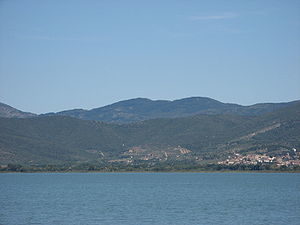
You Are Where It Actually Happened
But the essay that struck me about my life in Israel is “You are There.” Fadiman talks about the pleasure one Thomas Babington Macaulay had when he visited the field of Thrasymenus and read the description of Hannibal’s defeat of the Romans during the Second Punic War by Livy, a Roman historian (59 BCE – 17 CE).
I thought about what I’ve read and where I’ve been. I recognize the landmarks when I read about places like New York and Chicago. My son that it was “kind of neat” to visit the Metropolitan Museum of Art after reading From the Mixed-Up Files of Mrs. Basil E. Frankweiler. But one of the most amazing things about living in Israel is being able to see where Jewish history took place, often a five-minute drive from where I live:
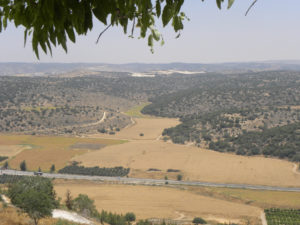
“The Philistines assembled their camps for war, and gathered at Socho that is to Judah; they camped between Socho and Azekah…” (Samuel I; 17:1_
“Saul, they and all the men of Israel were in the Elah Valley, fighting with the Philistines” (Samuel I; 17:19)
“Samson’s brothers and all his father’s house came and carried him away; they brought him and buried him between Zora and Eshtaol, in the burial plot of Manoah, his father” (Judges 16:31).
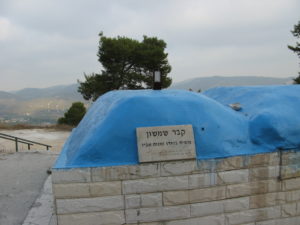

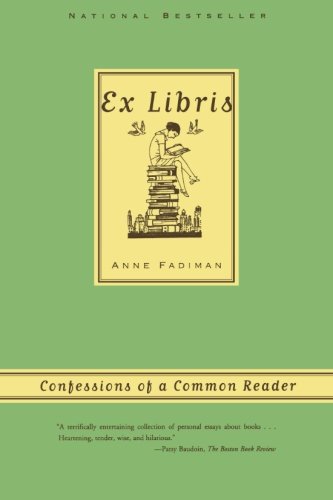
what people right on the inside cover ?
Interesting use of words!